Text

Umberto Brunelleschi, Scheherazade, La Guirlande, 1920.
Scheherazade is a major female character and the storyteller in the frame narrative of the Middle Eastern collection of tales known as the One Thousand and One Nights.
Created under the artistic direction of Umberto Brunelleschi (1879-1949), La Guirlande is one of the rarest of the Art Deco magazines. Early in his career, Brunelleschi produced fierce caricatures for L’assiette au beurre, a satirical weekly published in Paris from 1901 to 1914. He signed his drawings Aroun-Al-Raxid.
#umberto brunelleschi#illustration#pochoir#la guirlande#Scheherazade#art deco#art deco magazine#magazine#art#brunelleschi#oriental#1920#the nights#one thousand and one nights#nude#costume#orientalist#20s dancer#1920 illustrations#bare breasts#20s costumes#20s nude#dancer#movement#20s costume#female character#1920s illustration#La Guirlande
70 notes
·
View notes
Text

Georges Lepape, Papiers à Lettres “Élite”, detail: Maquette for the Logo of the Élite Paper Company, 1925.
Although Georges Lepape came to be renowned for his fashion illustrations and magazine covers, and also produced posters, cards, costume and set designs for the theatre and advertisements, such as the present sheet. This drawing was used as a design for the trademark for a brand of writing paper produced in 1925 by the Élite Paper Company in France. This image was used as a maquette for a printed advertisement, as well as for the covers of the boxes in which the letter paper and envelopes were sold.
#georges lepape#illustration#1925#art#advertising#reading#adverting illustration#logo#elite#elite paper company#paper company#papiers a lettres#detail#my edits#french#french art#lepape#lit#lit illustration#parisian#parisian advertising#parisian chic#baroc#baroc style#french elite#jazz age#roaring twenties#logo illustration
79 notes
·
View notes
Photo
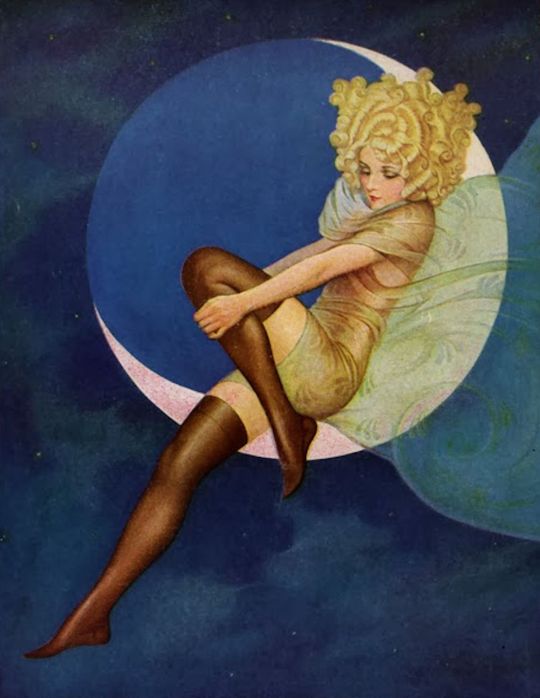
Gustaf Tenggren, Blue Moon Silk Stockings, first published in 1925.
#Gustaf Tenggren#illustration#1925#silk stockings#stockings#blue moon#blue moon stockings#art deco#art deco ad#art deco illustration#1925 illustrations#20s advert#1920s advert#underwear#vintage stockings#largman gray company#largman grey#moon#moon illustration#golden hair#nylons#nylons hosiery#pin-up#pin-ups#20s pin-ups#20s pinup#pin up girls#art deco design#20s pin ups#1920s pin ups
238 notes
·
View notes
Text
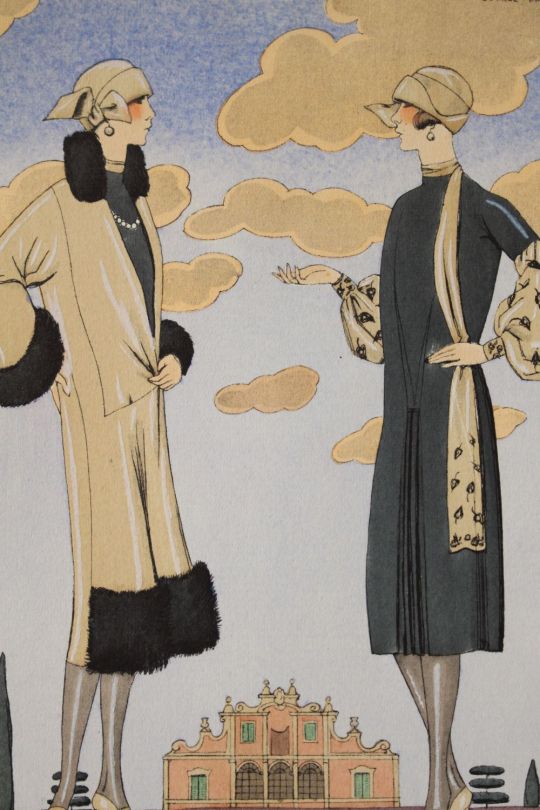
George Barbier, Rendez-vous Villa Gori. Robe et manteau de Charles Frederick Worth (Robe and Coat of Charles Frederick Worth), detail, La Gazette du Bon Ton, 1924.
#george barbier#illustration#1924#art#art deco#Charles Frederick Worth#worth#house of worth#chic#parisian chic#parisian fashion#art deco illustration#art deco fashion#jazz age#roaring twenties#parisian mode#robe and coat#20s fashion#vintage#1924 illustration#vintage illustration#french art deco#french deco#deco
48 notes
·
View notes
Text
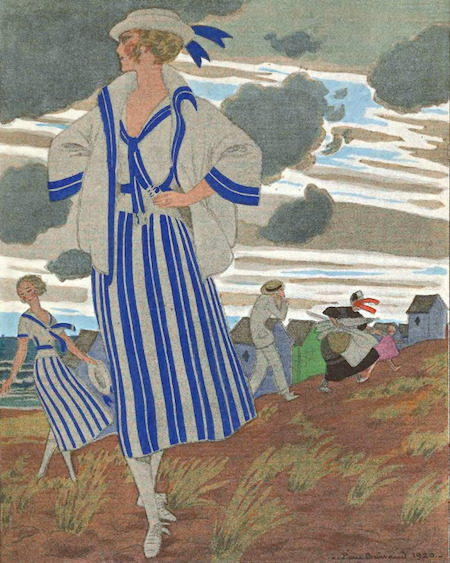
Pierre Brissaud (1884-1964), Rentrons (Let's go Home!), Robe de Plage, de Gustave Beer (Dress for the beach, by Gustave Beer), A breezy, postwar day where stripes are worn, La Gazette du Bon Ton, May 1920.
#Pierre Brissaud#illustration#art#1920#may issue#spring 1920#fashion#fashion illustration#house of beer#Gustav Beer#beach dresses#beach life#beach wear#beach#beachwear#Brissaud#20s fashion#20s mode#jazz age#roaring twenties#art deco#french art deco#deco#french deco#beer#de beer#beer paris#gustave beer
39 notes
·
View notes
Text
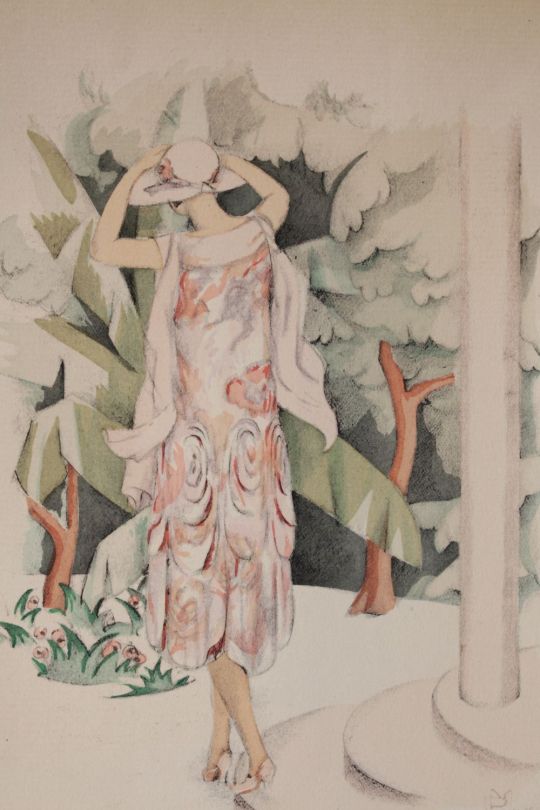
Madeleine Rueg, Allons au jardin. Robe d'après-midi, de Madeleine Vionnet (Let's go to the garden. Afternoon dress, by Madeleine Vionnet), detail, La Gazette du Bon ton, 1925.
For sale: Edition Originale
#Madeleine Rueg#illustration#art#vionnet#madeleine vionnet#fashion illustration#art deco#deco#french deco#afternoon dress#la gazette du bon ton#gazette du bon ton#chic#parisian chic#1925 illustrations#20s fashion#20s parisian fashion#parisian fashion#vintage#antique#evening dress#20s paris fashion#first edition
23 notes
·
View notes
Photo

Pierre Mourgue, Soir de Paris. Robe du soir, de Martial et Armand (Evening in Paris. Evening dress, by Martial and Armand), detail, Gazette du Bon Ton, 1922.
For sale: Edition Originale
#Pierre Mourgue#illustration#art#1922#gazette du bon ton#art deco#20s paris#soir de paris#evening in paris#robe du soir#evening dress#Martial et Armand#Martial and Armand#parisian life#parisian chic#1922 illustrations#1920s fashion#20s fashion#fashion illustration#martial & armand#cold shoulder
50 notes
·
View notes
Text
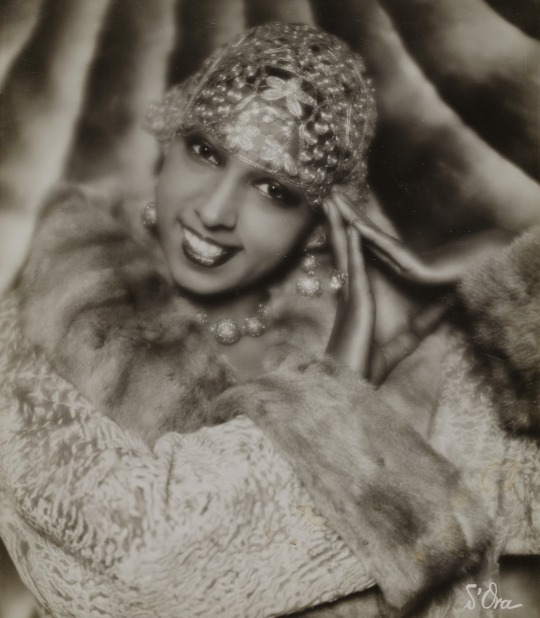
Madame d’Ora (Dora Kallmus), Entertainer Josephine Baker, 1928.
Museum für Kunst und Gewerbe Hamburg.
"I have walked into the palaces of kings and queens and into the houses of presidents. And much more. But I could not walk into a hotel in America and get a cup of coffee, and that made me mad. And when I get mad, you know that I open my big mouth. And then look out, 'cause when Josephine opens her mouth, they hear it all over the world ..." – Josephine Baker
#1928#photography#josephine baker#dora kallmus#the black pearl#la baker#jazz age#entertainer baker#baker#vaudeville#dancer#Freda Josephine Baker#Folies Bergère#roaring twenties#black venus#black pearl#Bronze Venus#Creole Goddess#quote#human rights#human rights quote#josephine baker quote#baker quote#civil rights activist#civil rights#civil rights quotes
87 notes
·
View notes
Text

Madame d'Ora (Dora Kallmus), Actress and dancer Elsie Altmann-Loos, 1922. Photostudio Setzer-Tschiedel, Vienna.
British Vogue
#1922#photography#Madame d'Ora#vienna#Elsie Altmann-Loos#dancer#1920s dancer#20s dancer#Setzer-Tschiedel#British Vogue#vogue uk#actress#actress and dancer#necklace#kimono#20s necklace#20s kimono#Dora Kallmus#20s vienna#austrian dancer
58 notes
·
View notes
Text

Armand Vallée, A Quoi Pensent Les Jeunes Filles (What Do Young Girls Think), La Vie Parisienne, April 19, 1924.
#1924#illustration#Armand Vallée#art#la vie parisienne#A Quoi Pensent Les Jeunes Filles#What Do Young Girls Think#parisian lifesyle#lesbians#art deco#20s#jazz age#art deco illustration#art deco style#antique#deco#fashion#Vallée#Armand Vallee#my edits#april issue
171 notes
·
View notes
Text
Lee Miller by Man Ray - 1930
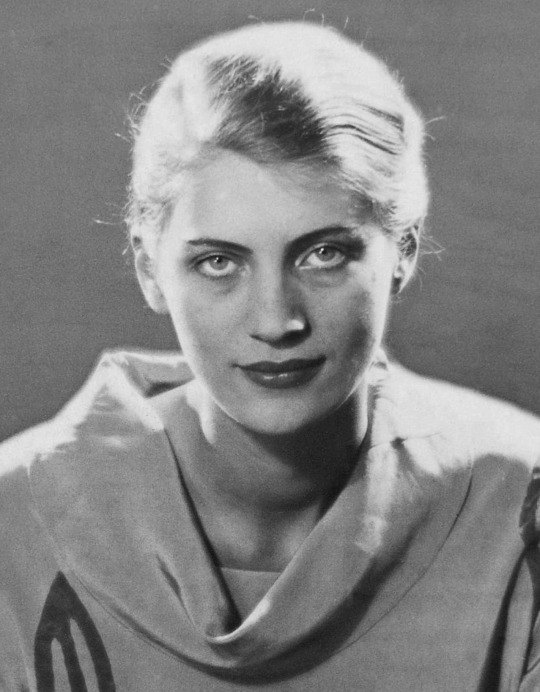
Lee Miller by Man Ray - 1930
159 notes
·
View notes
Photo

Cornelia Vanderbilt, Wedding gown design by Farquharson & Wheelock, Biltmore House (Biltmore Estate), April 29, 1924.
The silk slipper-satin, long-sleeve sheath with lace tunic bridal confection was created by society designers Farquharson & Wheelock, two Scottish sisters in demand for their court presentation gowns as well, with ateliers in New York and Washington, D. C.
#1924#bride#cornelia vanderbilt#wedding gown#Farquharson & Wheelock#biltmore house#biltmore estate#april wedding#april bride#bridal#20s bride#20s wedding dress#20s wedding gown#vanderbilt#vanderbilt wedding#cornelia stuyvesant#cornelia stuyvesant vanderbilt#vanderbilt family#cornelia vanderbilt cecil#beautiful wedding dress
305 notes
·
View notes
Photo

Lissy Lindt, Photo by Atelier Manassé, Wien, 1930.
#1930#Atelier Manassé#lissy lindt#wien#weimar era#weimar republic#weimar lifestyle#underwear#black underwear#sexy#sexy underwear#stockings#black stockings#1930s wien#30s wien#Atelier Manassé Wien#wien 1930#black boa#black feathered boa#feathered boa#smoking#smoking hot#cigarettes#cigarette#weimar lifeatyle#lifestyle#30s lifestyle#showgirl#cabaret#cabaret girls
268 notes
·
View notes
Text

George Barbier, L'Eau (Water) for Falbalas & Fanfreluches Almanach des Modes Prsentes Passes et Futures. 1924.
Hand-coloured, plate-signed pochoir from Falbalas & Fanfreluches: "Water", part of the "Four Elements" quatrain from Barbier's 1924 Almanac. "How far we have come" could be an apt subtitle with the revealing new bathing suits (or lack thereof), not to mention the streamlined turban, shown here midway in its evolution from Poiret's elaborate 1910-12 confection to the iconic flapper headband. The background reflection, so very stylized Art Nouveau in line, is a subtle reminder of the vast societal changes which transformed into the new permissive era over the span of a mere 20 years or so (reaching back to when the turn-of-the-century bathing costume was of serviceable and stout wool jersey, right down to the full-stockinged knees). This famous illustrated almanac series was produced from 1922 to 1926 only and depicted high-society life in Paris - the fashion, social and artistic capital of the early inter-war years. Each issue contained a small diary and notation section, an introduction by one of the leading social/cultural doyens of the day, a decorative cover and twelve fashion plates (one for each month of the year). (x)
#1924#illustration#water#george barbier#barbier#art deco#jazz age#20s paris#paris#paris fashion#l'eau#four elements#elements#high-society#high-society life#high-society life in paris#20s lifestyle#20s parisians#my edits#art#1924 illustrations
42 notes
·
View notes
Text

George Barbier, La Gourmandise (The Greedy). 1924
Hand-coloured, plate-signed pochoir from Falbalas & Fanfreluches: "The Gourmand/Gluttony" (The Greedy), part of the set "The Seven Deadly Sins " from the Almanac of 1925. One can nearly breathe in the heightened elegance not just through the elevated ceilings but in the exquisite dresses of the women waiting to be pampered beyond expectation with the best of French Cuisine. As is Barbier's inimitable style, the men are mere props to the confident curves of the New Woman, and from their take-charge poses we connect with the very tenor of their emerging social dominance and confidence. This famous series of illustrated almanacs was produced from 1922 to 1926 only and depicted high-society life in the fashion, social and artistic capital of the early inter-war years in Paris. Each issue contained a small diary and notation section, an introduction by one of the leading social/cultural doyens of the day, a decorative cover and twelve fashion plates (one for each month of the year). (x)
#george barbier#1924#illustration#art deco#barbier#the greedy#paris#paris 1924#jazz age#art deco illustration#deco#art deco style#1920s#20s#fashion#style#Gluttony#The Seven Deadly Sins#alamanac#20s paris#20s lifestyle#classy#elegance#20s elegance#seven deadly sins#seven sins#sins#Georges Augustin Barbier#art#painting
109 notes
·
View notes
Text
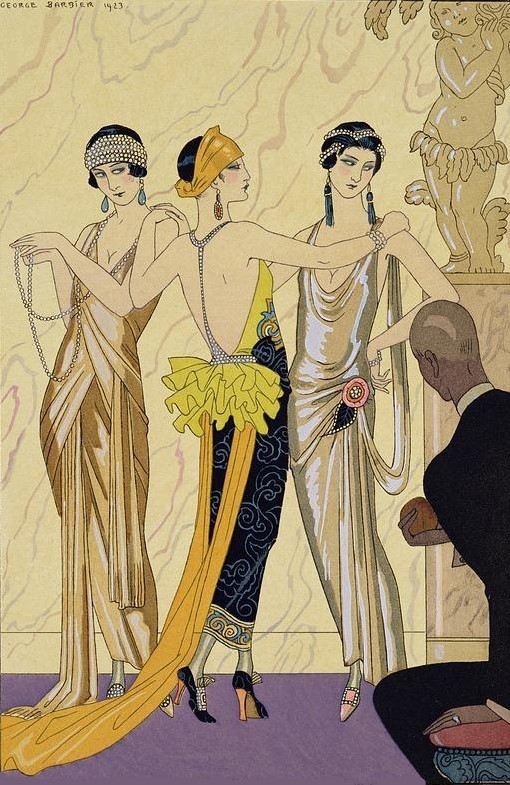
George Barbier, El juicio de Paris (The Judgement of Paris). 1923.
#1923#illustration#george barbier#the judgement of paris#art deco#jazz age#the roaring twenties#evening dress#evening gown#bandana#1923 illustrations#paris#parisien life#parisien fashion#fashion#20s fashion#20s illustrations#flapper#Georges Augustin Barbier#Judgement#20s paris#parisian fashion#art#art deco illustrations
283 notes
·
View notes